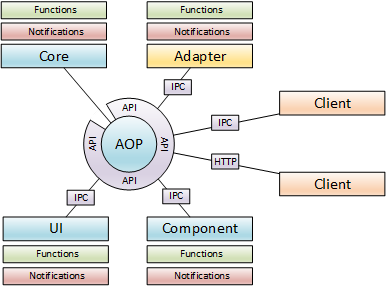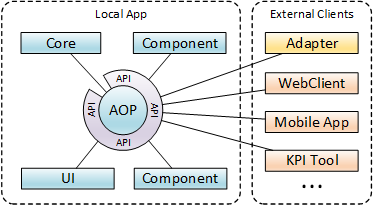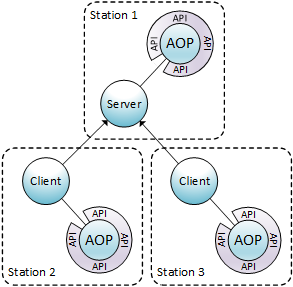WinGuard AOP
Completed
What is AOP
Introduction and overview
The Advancis Open Platform (AOP) is first of all a component model.

The AOP core provides its API via IPC and allows components to connect. These can be UI components, Adapter components and others.
Each component can register its own services with functions and notifications and thereby extend the API. In other words, the components simultaneously use and form the API.
Since IPC uses only standard technologies (HTTP, WebSockets, JSON), basically any programming language can be used to create components.
Components that do not provide their own services are referred to as clients.
What makes the API special is that it is designed for both simultaneously - that is, to create a component-based application (the App) as well as to provide external access to that application.

In addition to this component model, the Advancis Open Platform also provides a collection of existing services and ready-to-use concepts, including:
- Data objects
- Device integration
- User and rights management
- and more …
AOP has evolved from WinGuard and now forms its foundation. The services and concepts are inspired from there and the transition is fluid. So far, the API does not clearly separate the two.
In a WinGuard network, each station forms its own AOP Node:

Access to the WinGuard system is possible at each of the Nodes, with the restriction that only data available at that respective station can be accessed.
The Nodes are not connected directly, but via the WinGuard network. In this way, services can also be routed between Nodes. The creation of networked components is thus possible.
The services of the API are defined independently of concrete programming languages or transfer protocols. AOP uses its own data model and logical value types.
However, it is usually not necessary to deal with these details. The available SDKs encapsulate most of the details of component implementation and usually map the API completely into the respective programming language.
Commenting is not enabled on this course.